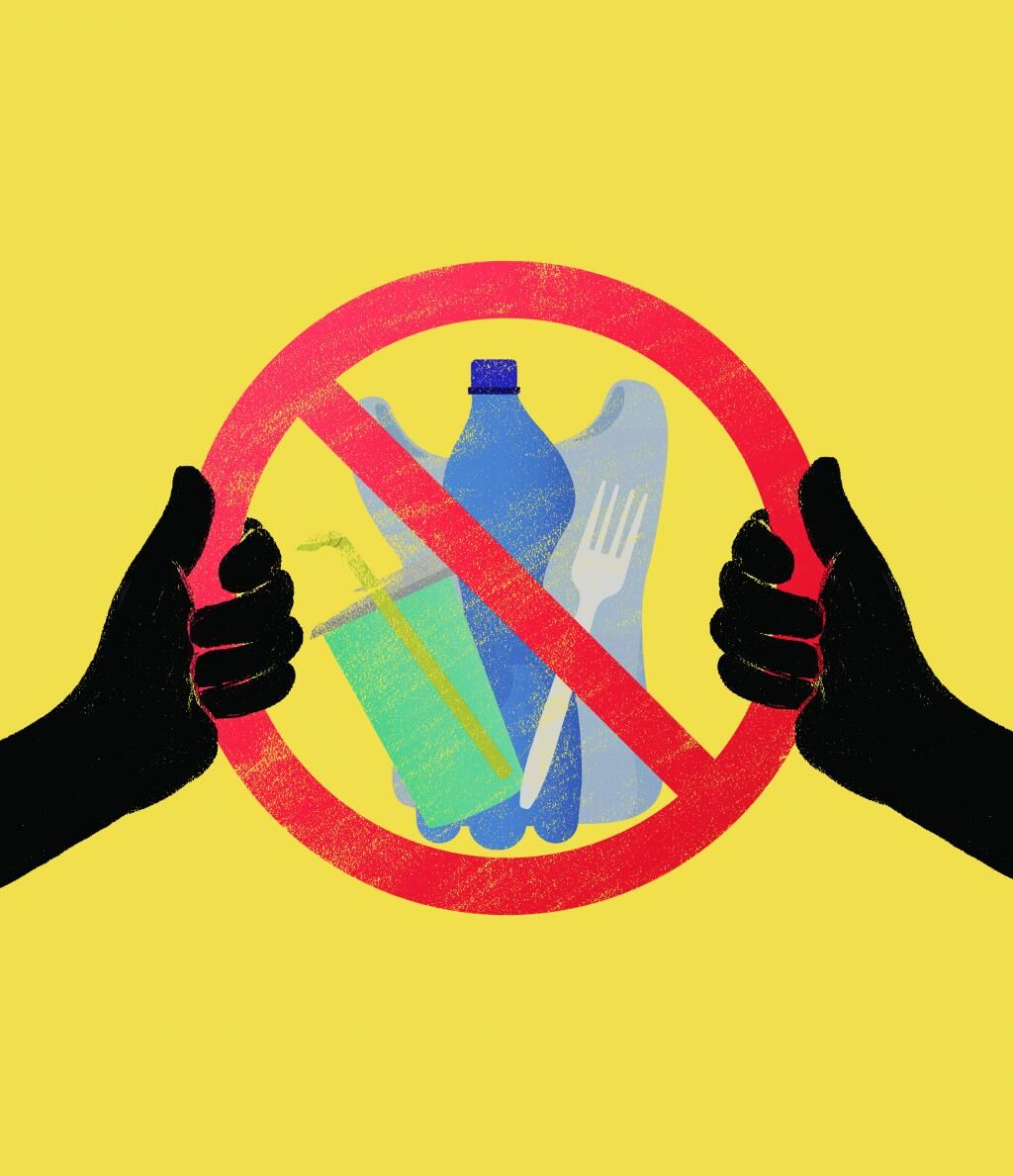Make or break moment
Plastic items difficult to collect or recycle should be eliminated from use. This is where the current ban, however limited, fits in

India's ban on certain items that are defined as single-use plastics has come into effect from July 1, in the midst of enormous pressure from certain industries to defer the deadline.
The fact is that the current ban on single-use plastics is too limited, though it is a critical step to control the menace. We do not need to be warned about the problem. We live it every day.
Our cities are littered with non-biodegradable plastic material, and it is greatly adding to environmental stress and degradation.
The way ahead is to ensure that ubiquitous plastic items in our daily lives are recycled or disposed of safely. For this, we need a three-pronged strategy:
• First, all the plastic produced and used should be collected for disposal
• Second, the waste plastic material must be recycled or incinerated — it should not reach landfills or choke our water bodies
• Third, the reuse or disposal has to be in a manner that is environmentally friendly and does not end up creating more pollution or health hazard for workers
But, most importantly, those plastic items that are difficult to collect or recycle should be eliminated from use. This is where the current ban, however limited, fits in.
The objective is to identify items of everyday utility that are used once and thrown and added to litter. This is why the list of banned items includes earbuds, cutlery, straws and carry bags (of thickness less than 120 micron, by December 2022).
The ban on carry bags is not novel. As many as 25 states and Union Territories have already banned them, as per the latest report of the Central Pollution Control Board (CPCB).
The states say it is difficult to regulate this item based on plastic thickness. But we know that the enforcement is inadequate. This is why implementation of the new ban will make or break India's fight against plastic waste.
The current list of banned items is not comprehensive. One can argue that if the aim is to get rid of the items that are difficult to collect or are single-use, then this list should have included multi-layered packaging.
This is what is used in almost all fast-moving consumer goods—from chips to shampoos to gutka pouches. This is the real menace when it comes to plastic contamination because these items are almost impossible to collect and absolutely impossible to process.
The only thing that can be done with this packaging material is to send it to cement plants for incineration. This is why the few studies — mostly done by CPCB — on the characteristics of plastic found in landfill sites show up this single-use plastic.
The government said all packaging material has been included as part of the extended producer responsibility (EPR) notification. Under this, the companies that manufacture or consume this material are required to take it back and send it for reprocessing. Even company-wise annual targets have been fixed on how much is to be recollected.
This sounds good on paper, but there are huge problems in the way EPR has been designed or is being implemented. For instance, there is no information on the quantity of this plastic material or the waste the company generates. Not only is it based on self-declaration, but there is nothing available in the public domain to assess its accuracy.
This means the target that has been set for each company is meaningless. There is no benchmark on which it can be said to be adequate. Worse, under EPR, companies are required to recycle or reprocess the material they collect only by 2024. The question, then, is what is happening to the plastic waste that is being collected — is it being stored or dumped?
I saw this in practice when I visited an authorised Producer Responsibility Organisation (PRO), an agency that is contracted by companies to collect waste on their behalf to meet the EPR targets. This pro was getting waste from municipal bodies.
It would put the waste on large conveyor belts, where its staff would pick up the items to sort them into different bundles — from aluminium tins to pouches. The problem was what to do with the sorted material? The PRO would sell what was of value, but items that could not be recycled were simply stored in the same warehouse.
I saw mountains of neatly sorted and bundled multi-layered packages and pouches. The PRO said it was running out of space and the only option was to send the material for incineration to cement companies; but the transport cost was prohibitive. Back to square one. Only this time, the waste was not littered but packed, with nowhere to go but, perhaps, a dump yard.
This is why the most contentious issue is what we mean by recycling. We would like to assuage our guilt by believing that the waste we throw is reprocessed. But we must understand that this is either not happening, or if it is happening, it is because of the millions of poor people working in the informal sector who manage to make value out of our refuse. They are the real waste warriors.
It is time we understand this so that we become responsible for our own waste and not use the banned items today, and ask for more to be banned tomorrow — because we must and can live without them. DTE
The writer is the Director-General of CSE and editor of DownToEarth. Views expressed are personal



